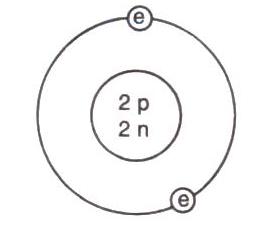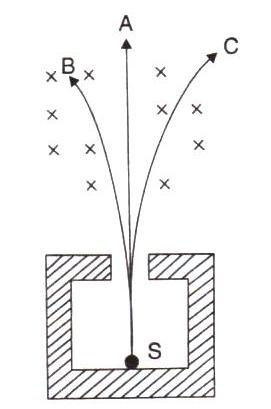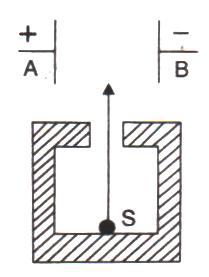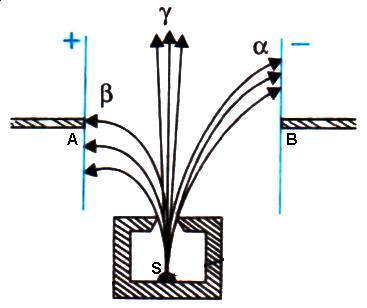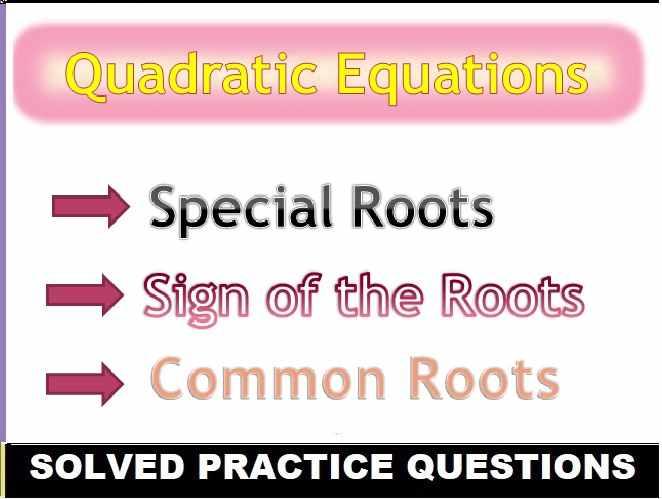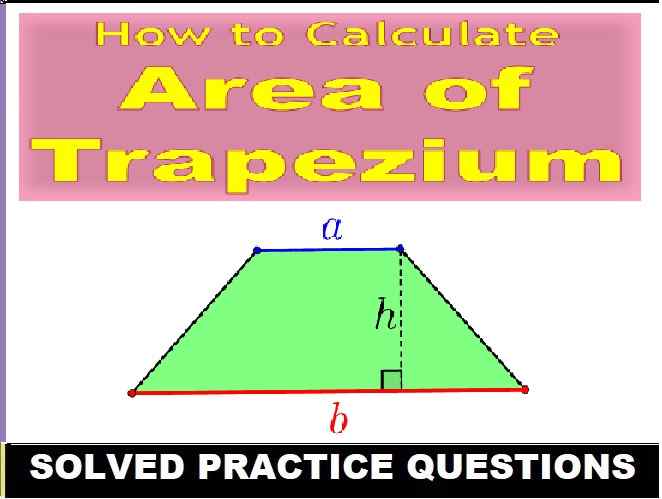Radioactivity ICSE Class-10 Concise Physics Selina Solutions Chapter-12. We Provide Step by Step Answer of Exercise-12(A), MCQs-12(A), Exercise-12(B), MCQ-12(B) and Num -12(B) Questions of Exercise-12 Radioactivity ICSE Class-10 Concise . Visit official Website CISCE for detail information about ICSE Board Class-10.
| Board | ICSE |
| Publications | Selina Publication |
| Subject | Physics |
| Class | 10th |
| Chapter-12 | Radioactivity (Exercise – 12A) |
| Book Name | Concise |
| Topics | Solution of Exercise-12(A), MCQs-12(A), Exercise-12(B), MCQ-12(B) and Num -12(B) |
| Academic Session | 2021-2022 |
Radioactivity ICSE Class-10 Concise Physics Selina Solutions Chapter-12
-: Select Exercise :-
Exercise-12(A), MCQs-12(A),
Exercise-12(B), MCQ-12(B) and Num -12(B)
Exercise -12(A) ,Solution of ICSE Class-10 Selina Physics Radioactivity
Page 297
Question 1
Name the three constituent of an atom and state their mass and charge of each. How are they distributed in an atom?
Answer 1
Three constituent of an atom are:
Electrons: mass is 9.1 X10-31 kg, charge is -1.6 X 10-19C
Neutron: mass is 1.6749 X10-27 kg, charge is zero.
Protons: mass is 1.6726 X 10-27 kg, charge is +1.6 X 10-19 C
Question 2
Define the terms:
(a)Atomic number and(b) mass number.
Answer 2
Atomic number -the number of protons in the nucleus is called atomic number.
Mass number-the total number of nucleons in the nucleus is called mass number.
Question 3
What is nucleus of an atom? Compare its size with that of the atom. Name its constituents. How is the number of these constituents determined by the atomic number and mass number of the atom.
Answer 3
The nucleus at the centre of atom, whose size is of the order of 10-15 m to 10-14 m.
The size of a nucleus is 10-5 to 10-4 times the size of an atom. It consists of protons and neutrons.
If Z is the atomic number and A is the mass number of an atom, then the atom contains Z number of electrons; Z number of protons and A – Z number of neutrons.
The atom is specified by the symbol ![]() where X is the chemical symbol for the element.
where X is the chemical symbol for the element.
Question 4
State the atomic number and mass number of Na 11 and draw its atomic model.
Answer 4
Atomic number Z = 11
Mass number A = 23
Number of neutrons A – Z = 12
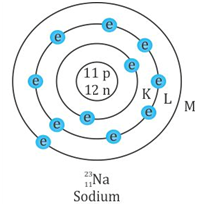
Question 5
What are isotopes? Give one example.
Answer 5
Isotopes: the atoms of the same element which have the same atomic number Z but differ in their mass number A are called isotopes.
Example: Hydrogen has three isotopes![]()
Question 6
What are isobars? Give one example.
Answer 6
Isobars: the atoms of different elements which have the same mass number A, but differ in their atomic number Z are called isobars.
Example: ![]()
Question 7
What is the name given to elements with same mass number and different atomic number?
Answer 7
Isobars
Question 8
Name the atoms of a substance having same atomic number, but different mass numbers. Give one example of such a substance. How do the structures of such atoms differ?
Answer 8
Atoms of a substance having same atomic number, but different mass numbers are called isotopes.
Example: Hydrogen has three isotopes
Structure of each isotope differs by the number of neutrons in its nuclei.
Question 9
What is meant by radioactivity? Name two radioactive substances.
Answer 9
Radioactivity: radioactivity is a nuclear phenomenon. It is the process of spontaneous emission ![]() of radiations from the nuclei of atoms during their decay.
of radiations from the nuclei of atoms during their decay.
Example: uranium, radium.
Question 10
A radioactive substance is oxidized. What changes would you expect to take place in the nature of radioactivity? Explain your answer.
Answer 10
There will be no change in the nature of radioactivity. This is because radioactivity is a nuclear phenomenon.
Question 11
A radioactive source emits three types of radiations
(a) Name the three radiations.
(b) Name the radiations which are deflected by the electric field.
(c) Name the radiation which is most penetrating.
(d) Name the radiation which travels with the speed of light.
(e) Name the radiation which has the highest ionizing power.
(f) Name the radiation consisting of the same kind of particles as the cathode rays.
Answer 11
(a) Three types of radiations: Alpha, beta and gamma.
(b) Alpha and beta radiations
(c) Gamma radiations
(d) Gamma radiations
(e) Alpha radiations
(f) Beta radiations
Question 12
A radioactive source emits three types of radiations.
(a)Which radiation has zero mass?
(b)Name the radiation which has the lowest ionizing power.
(c)Name the radiation which has the lowest penetrating power.
(d)Give the charge and mass of particles composing the radiation in part (c).
(e)When the particle referred to in part (c) becomes neutral, they are found to be the atoms of rare gas. Name this rare gas and draw a model of its neutral atom.
(f)From which part of the atom do these radiations come?
Answer 12
(a) Gamma radiations have zero mass.
(b) Gamma radiations have the lowest ionizing power.
(c) Alpha particles have lowest penetrating power.
(d) Alpha particle has positive charge equal to 3.2 x 10-19C and rest mass equal to 4 times the mass of proton i.e. 6.68 x 10-27 kg.
(e) The gas is Helium.
(f)These radiations come from nucleus of the atom.
Page 298
Question 13
The diagram in figure shows a radioactive source S placed in a thick lead walled container. The radiations given off are allowed to pass through a magnetic field. The magnetic field (shown as x) acts perpendicular to the plane of paper inwards. Arrows shows the paths of the radiation A, B and C.
(a)Name the radiations labelled A, B and C.
(b)Explain clearly how you used the diagram to arrive at the answer in part(a).
Answer 13
Radiations labeled A, B and C are ![]() respectively.
respectively.
Radiation labeled A is gamma radiation because they have no charge and hence under action of magnetic field they go un deflected.
Radiation B is alpha radiation because its mass is large and it would be deflected less in comparison to beta radiation. The direction of deflection is given by Fleming’s left hand rule. Also directions of deflection of alpha and beta radiations are opposite as they have opposite charge.
Question 14
Fig. shows a mixed source R of alpha and beta particles in a thick lead walled container. The particles pass through a magnetic field in a direction perpendicular to the plane of paper inwards as shown by x.
(a) Show in the diagram how the particles get affected.
(b) Name the law used in part (a)

[Hint: Alpha particles will deflect to the left while beta particles to the right]
Answer 14
(a)

(b) Fleming’s left hand rule
Question 15
Fig. shows a radioactive source S in a thick lead walled container having a narrow opening. The radiations pass through an electric field between the plates A and B.
(a)Complete the diagram to show the paths of alpha, beta and gama radiations.
(b)Why is the source S kept in a thick lead walled container with a narrow opening?
(c) Name the radiation which is unaffected by the electrostatic field.
(d) Which radiation is defleced the most. Given reason.
(e) Which among the three radiations causes the least biological damage?
Answer 15
(a)
(b)The radioactive substances are kept in thick lead containers with a very narrow opening, so as to stop radiations coming out from other directions because they may cause biological damage.
(c) Gamma radiations.
(d) Beta radiations.
(e) Alpha particle.
Question 16
Explain why alpha and beta particles are deflected in an electric or a magnetic field, but gamma rays are not deflected in such a field.
Answer 16
This is because alpha and beta particles are charged particles, but gamma rays are neutral particles.
Question 17
Is it possible to deflect -radiations in a way similar to α and β-particles, using the electric or magnetic field? Give reasons.
Answer 17
No, it is not possible to deflect gamma radiation in a way similar to alpha and beta particles, using the electric or magnetic field because they are neutral and hence do not deflected under the action of electric or magnetic field.
Question 18
State following four properties each of ![]() radiations: (a) Nature, (b) Charge, (c) Mass and (d) Effect of electric field.
radiations: (a) Nature, (b) Charge, (c) Mass and (d) Effect of electric field.
Answer 18
| Property | -particle | -particle | -particle |
| Nature | Stream of positively charged particles, i.e. helium nuclei. | Stream of negatively charged particles, i.e. energetic electrons. | Highly energetic electromagnetic radiation. |
| Charge
|
Positive charge (Two times that of a proton) = + 3.2 x 10-19 C (or +2e) | Negative charge = – 1.6 x 10-19 C (or -e) | No charge
|
| Mass | Four times the mass of proton i.e., 6.68 x 10-27 kg | Equal to the mass of electron, i.e. 9.1 x 10-31 kg | No mass (Rest mass is zero) |
| Effect of electric field
|
Less deflected
|
More deflected than alpha particles but in direction opposite to those of particles | Unaffected |
Question 19
Arrange the α, β, or γ radiation in ascending order of their (i) ionizing powers, and (ii) penetrating powers.
Answer 19
Ionizing power of alpha radiation is maximum i.e., 10000 times of gamma radiation while beta particles have lesser ionizing power i.e., 100 times of gamma radiation and gamma radiation have least ionizing power.
Penetration power is least for alpha particle and maximum for gamma radiation.
Question 20
State the speed of each of α, β, and γ – radiations.
Answer 20
Speed of ![]() radiation is nearly 107 m/s.
radiation is nearly 107 m/s.
Speed of ![]() radiation is about 90% of the speed of light or 2.7 x 108 m/s.
radiation is about 90% of the speed of light or 2.7 x 108 m/s.
Speed of ![]() radiation is 3 x 108 m/s in vacuum.
radiation is 3 x 108 m/s in vacuum.
Question 21
(a) What is the composition of alpha, beta and gamma radiations ?
(b) Can a hydrogen (H) nucleus emit an alpha particle ?
(c) Which one α, β, or γ radiation has the least penetrating power?
Answer 21
(a) Alpha radiations are composed two protons and two neutrons.
Beta particles are fast moving electrons.
Gamma radiations are photons or electromagnetic waves like X rays.
(b) No
(c) Alpha radiation has the least penetrating power.
Question 22
How are  -radiations are produced? Mention two common properties of gamma radiations and visible light.
-radiations are produced? Mention two common properties of gamma radiations and visible light.
Answer 22
Gamma radiation are produced when a nucleus is in a state of excitation (i.e., it has an excess of energy). This extra energy is released in the form of gamma radiation.
Gamma radiations like light are not deflected by the electric and magnetic field.
Gamma radiations have the same speed as that of light.
Question 23
An  -particle captures (i) one electron, (ii) two electrons. In each case, What does it change to?
-particle captures (i) one electron, (ii) two electrons. In each case, What does it change to?
Answer 23
It will become singly ionized helium.
Question 24
‘Radioactivity is a nuclear phenomenon’. Comment on this statement.
Answer 24
Any physical changes (such as change in pressure and temperature) or chemical changes (such as excessive heating, freezing, action of strong electric and magnetic fields, chemical treatment, oxidation etc.) do not alter the rate of decay of the radioactive substance.
This clearly shows that the phenomenon of radioactivity cannot be due to the orbital electrons which could easily be affected by such changes. The radioactivity should therefore be the property of the nucleus. Thus radioactivity is a nuclear phenomenon.
Question 25
What kind of change takes place in a nucleus when a ![]() -particle is emitted? Express it by an equation. State whether (a) atomic number and (b) mass number are conserved in a radioactive
-particle is emitted? Express it by an equation. State whether (a) atomic number and (b) mass number are conserved in a radioactive ![]() -decay?
-decay?
Answer 25
On emitting a ![]() particle, the number of nucleons in the nucleus (i.e. protons and neutrons) remains same, but the number of neutrons is decreased by one and the number of protons is increased by one.
particle, the number of nucleons in the nucleus (i.e. protons and neutrons) remains same, but the number of neutrons is decreased by one and the number of protons is increased by one.
If a radioactive nucleus P with mass number A and atomic number Z emits a beta particle to form a daughter nucleus Q with mass number A and atomic number Z+1, then the change can be represented as follows:
![]()
(a) Atomic number ‘Z’ is not conserved. It is increased by 1.
(b) Mass number A is conserved.
Question 26
A certain radioactive nucleus emits a particle that leaves its mass unchanged, but increased its atomic number by one. Identify the particle and write its symbol.
Answer 26
Beta particle
Its symbols .![]()
Page 299
Question 27
What happens to the (i) atomic number, (ii) mass number of an element when (a) -particle (b) -particle and (c) γ-radiation are emitted?
Answer 27
(a)Atomic number decreases by 2.
(b)Atomic number increases by 1.
(c)Atomic number does not change.
Question 28
What happens to the position of an element in the periodic table when it emits (a) an alpha particle, (b) -particle and (c)-radiation? Give reasons for your answer.
Answer 28
(a) After emitting an alpha particle the daughter element occupies two places to the left of the parent element in the periodic table.
Reason: If a parent nucleus X becomes a new daughter nucleus Y as a result of -decay, then the -decay can be represented as:
![]()
Thus, the resulting nucleus has an atomic number equal to (Z-2). Hence, it shifts two places to the left of the parent element in the periodic table.
(b) After emitting a -particle, the daughter element occupies one place to the right of the parent element in the periodic table.
Reason: If a parent nucleus X becomes a new daughter nucleus Y as a result of -decay, then the -decay can be represented as:

Thus, the resulting nucleus has an atomic number equal to (Z+1). Hence, it shifts one place to the right of the parent element in the periodic table.
(c) After emitting -radiation, the element occupies the same position in the periodic table.
Reason: If a parent nucleus X becomes a new daughter nucleus Y as a result of -decay, then the -decay can be represented as:
![]()
Thus, the resulting nucleus has atomic number equal to Z. Hence, it occupies the same position as the parent element in the periodic table.
Question 29
What changes occurs in the nucleus of radioactive elements when it emits (a) an alpha particle (b) beta particle and (c) gamma radiations? Give one example in each case in support of your answer.
Answer 29
The following changes occur when an atom emits
An alpha particle: atomic number decreases by 2 and mass number decreases by 4.
Example: ![]()
A beta particle: atomic number increases by one, but mass number does not change.
Example: ![]()
Gamma particle: it does not change anything in the nucleus, the energy of the nucleus decreases.
Example: ![]()
Question 30
(a)An atomic nucleus A is composed of 84 protons and 128 neutrons. The nucleus A emits an -particle and is transformed into a nucleus B. What is the composition of B?
(b)The nucleus B emits a -particle and is transformed into a nucleus C. What is the composition of C?
(c)What is the mass number of nucleus A?
(d)Does the composition of nucleus C change if it emits a -radiation?
Answer 30
(a)The composition of B – 82 protons and 126 neutrons.
(b)The composition of C – 83 protons and 125 neutrons.
(c)The mass number of nucleus A = no. of protons +no. of neurons = 84+128=212.
(d)Their will be no change in the composition of nucleus C.
Question 31
A certain nucleus A (mass number 238 and atomic number 92) is radioactive and becomes a nucleus B (mass number 234 and atomic number 90) by the loss of one particle.
(a)What particle was emitted?
(b)Explain how you are arrived at your answer.
(c)State the change in the form of a reaction.
Answer 31
(a)The alpha particle was emitted.
(b)This is because the atomic number has decreased by 2 and mass number has decreased by 4.
(c)![]()
Question 32
State whether the following nuclear disintegrations are allowed or not (star indicate an exited state). Give reason if it is not allowed.
Answer 32
(a)This is allowed.
(b)This is not allowed because mass number is not conserved.
Question 33
A nucleus is ![]() is β-radioactive.
is β-radioactive.
(a)What are the numbers 24 and 11 called?
(b) Write the equation represent β-decay.
(c) What general name is given to the product nucleus with respect to Na ?
Answer 33
An atom is specified by the symbol where X is the chemical symbol for the element.
(a) Z is the atomic number and A is the mass number of an atom, then the atom contains Z number of electrons.
(b) 24 is the mass number and 11 is the atomic number.![]()
(c) Isobar
Question 34
A nucleus of stable phosphorus has 15 protons and 16 neutrons.
(a) What is its atomic number and mass number.
(b) The nucleus of radio phosphorous has one neutron more than the stable nucleus. What will be its atomic number and mass number?
(c) What will be the atomic number and mass number of new nucleus formed by decay of a β-particle by the radio phosphorus in part(b)?
Answer 34
If Z is the atomic number and A is the mass number of an atom, then the atom contains Z number of electrons; Z number of protons and A – Z number of neutrons.
The atom is specified by the symbol where X is the chemical symbol for the element.
(a) Atomic number is 15 and mass number is 31.
(b) Atomic number is 15 and mass number is 32.
(c) Atomic number is 16 and mass number is 32.
Question 35
An element P disintegrates by -emission and the new element suffers two further disintegrations, both by -emission, to form an element Q. Explain the fact that P and Q are the isotopes.
Answer 35
The atomic number of P decreases by 2 and mass no. decreases by 4 due to the emission of one alpha particle and then increases by 1 due to the emission of each beta particle, so the atomic number of Q formed after the emission of one alpha and two beta particles is same as that of P. Hence P and Q are the isotopes.
Question 36
A nucleus ![]() emits 2 α particles and 1 β particle to form a nucleus
emits 2 α particles and 1 β particle to form a nucleus ![]() . Find the atomic number and mass number of X.
. Find the atomic number and mass number of X.
Answer 36
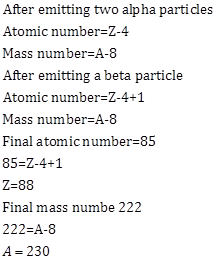
Question 37
Complete the following sentences:
(a)The mass number (A) of an element is not changed when it emits __________.
(b)The atomic number of a radioactive element is not changed when it emits ________.
(c)During the emission of a beta particle, the ________ number remains same.
Answer 37
(a)The mass number (A) of an element is not changed when it emits beta and gamma radiations.
(b)The atomic number of a radioactive element is not changed when it emits gamma radiations.
(c)During the emission of a beta particle, the mass number remains same.
Page 300
Question 38
Complete the following nuclear changes:
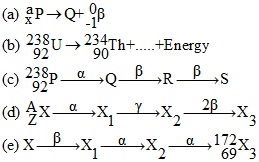
Answer 38
(a)
(b)
(c)
(d)
(e)
Question 39
What are radio isotopes? Give one example of a radio isotope. State one use of radio isotopes.
Answer 39
Radio isotopes: The isotopes of some elements with atomic number Z
Example: carbon (Z=6, A=14).
Radio isotopes are used in medical and scientific and industrial fields. Radio isotopes such as are used as fuel for atomic energy reactors.
Question 40
Why are the alpha particles not used in radio therapy?
Answer 40
Because they cannot penetrate the human skin.
Question 41
Why do we usually use isotopes emitting gamma radiations as radioactive tracers in medical science?
Answer 41
Gamma radiations have very high penetration power and can easily pass through the human body. Therefore they are used as radioactive tracers in medical science.
Question 42
When does the nucleus of an atom become radioactive?
Answer 42
When the number of neutrons exceeds much than the number of protons in a nuclei, it become unstable or radioactive.
Question 43
Which of the following is the radio isotope in each pair?

Give reason for your answer.
Answer 43
(a) ![]() , (b)
, (b) ![]() , (c)
, (c)![]()
The reason is that the number of neutrons exceeds the number of protons.
Question 44
State the medical use of radioactivity.
Answer 44
Many diseases such as leukemia, cancer, etc., are cured by radiation therapy. Radiations from cobalt -60 are used to treat cancer by killing the cells in the malignant tumor of the patient.
The salt of weak radioactive isotopes such as radio-sodium chloride, radio-iron and radio-iodine are used for diagnosis. Such radio isotopes are called the tracers.
Question 45
Arrange the α, β, and γ radiation in ascending order of their biological damage. Give reason.
Answer 45
a < β < γ
An α-particle rapidly loses its energy as it moves through a medium and therefore its penetrating power is quite small. It can penetrate only through 3 – 8 cm in air. It can easily be stopped by a thin card sheet or a thick paper.
The penetrating power of β-particles is more than that of the α-particles. They can pass through nearly 5 m in air, through thin card sheet, and even through thin aluminium foil, but a 5 mm thick aluminium sheet can stop them.
Whereas, the penetrating power of γ-rays is high. It is about 104 times that of α-particles and 102 times that of β-particles. They can pass through 500 m in air or through 30 cm thick sheet of iron. Thick sheet of lead is required to stop them.
Question 46
Name two main sources of nuclear radiations. How are these radiations harmful?
Answer 46
Two main sources of nuclear radiations are:
1.Radioactive fallout from nuclear plants and other sources.
2.Disposal of nuclear waste.
These radiations are harmful because when these radiations falls on the human body, they kill the human living tissues and cause radiation burns.
Question 47
State two safety measures to be taken while establishing a nuclear power plant?
Answer 47
The following safety measures must be taken in a nuclear power plant:
1.The nuclear reactor must be shielded with lead and steel walls so as to stop radiations from escaping out to the environment during its normal operation.
2.The nuclear reactor must be housed in an air tight building of strong concrete structure which can withstand earthquakes, fires and explosion.
3.There must be back up cooling system for the reactor core, so that in case of failure of one system, the other cooling system could take its place and the core is saved from overheating and melting.
Question 48
What is meant by nuclear waste? State one way for the safe disposal of nuclear waste?
Answer 48
The radioactive material after its use is known as nuclear waste.
It must be buried in the specially constructed deep underground stores made quite far from the populated area.
Question 49
State three safety precautions that you would take while handling the radioactive substances.
Answer 49
Three safety precautions that we would take while handling the radioactive substances are:
(a) Put on special lead lined aprons and lead gloves.
(b) Handle the radioactive materials with long lead tongs.
(c) Keep the radioactive substances in thick lead containers with a very narrow opening, so as to stop radiations coming out from other directions.
Question 50
Why should a radioactive substance not be touched by hands?
Answer 50
Radioactive substance should not be touched by hands because these radiations are harmful; when radiation falls on the human body, they kill the human living tissues and cause radiation burns.
Question 51
What do you mean by background radiations? Name its sources. Is it possible for us to keep ourselves away from it?
Answer 51
Background radiation: These are the radioactive radiations to which we all are exposed even in the absence of an actual visible radioactive source.
There are two sources of background radiation:
Internal source: potassium, carbon and radium are present inside our body.
External sources: cosmic rays, naturally occurring radioactive elements such as radon-222 and solar radiation.
It is not possible for us to keep ourselves away from the background radiations.
What is meant by nuclear waste? State one way for the safe disposal of nuclear waste?
Selina Solutions of ICSE Class-10 Physics Radioactivity
Exercise – 12 (A) Multiple Choice Type
Page 300
Question 1
A radioactive substance emits radiations:

Answer 1
![]()
Hint: In a single radioactive decay, and particles are never emitted simultaneously. There will be either an -emission or a -emission, which may be accompanied by emission.
Question 2
In![]() – emission from a radioactive substance, an electron is ejected. This electron comes from:
– emission from a radioactive substance, an electron is ejected. This electron comes from:
(a) The outermost orbit of an atom
(b) The inner orbits of an atom
(c) The surface of substance
(d) The nucleus of an atom
Answer 2
The nucleus of the atom.
Hint: Radioactivity is a nuclear phenomenon. Hence, electrons come out from the nucleus. Electron is created as a result of decay of one neutron into a proton inside the nucleus and it is not possible for the electron to stay inside the nucleus; thus, it is spontaneously emitted.
Question 3
The least penetrating radiation is:
(a) α – particles
(b) β – particles
(c) X – rays
(d) γ – radiations
Answer 3
(a) α – particles
An α – particle rapidly loses its energy as it moves through a medium and therefore its penetrating power is quite small. It can penetrate only through 3 – 8 cm in air. It can easily be stopped by a thin card sheet or a thick paper.
Question 4
The radiation suffering the maximum deflection in a magnetic field is:
(a) α – particles
(b) β – particles
(c) X – rays
(d) γ – radiations
Answer 4
(b) β-particles
β-particles are negatively charged, so they get deflected by the electric and magnetic fields. The deflection of β-particle is more than that of a-particle since a β-particle is lighter than the α-particle. Whereas, gamma radiations are not deflected by the electric and magnetic fields since they are not charged particles.
Return to Concise Selina ICSE Physics Class-10
Thanks
